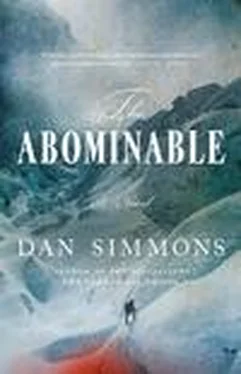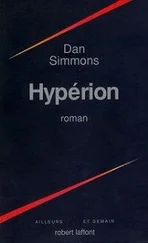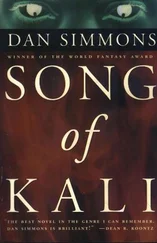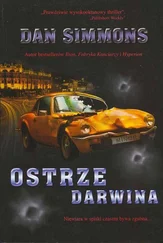“Or not,” he added and gestured to the cluttered worktable. “Richard, the coats are indeed ready for you to take today. I also thought we might look over the oxygen apparatus that we used in ’twenty-two, then the rigs that Sandy Irvine changed for his and Mallory’s final attempt, and now the final version you and I decided on. I need your approval before I ship them to Liverpool for loading on whichever ship you sail on next month.”
February departure was just a month away. Jean-Claude and I had known since November, of course, that the Deacon had been ordering oxygen tanks and breathing equipment for our small-scale expedition. And we knew that he’d decided not to use Siebe Gorman in England for the equipment, even though—or actually, because—Siebe Gorman had done all the oxygen rigs for the ’21, ’22, and ’24 official expeditions. The Deacon had explained that the risk was too great that Siebe Gorman might leak out word of another expedition outfitting itself with oxygen for the Himalayas—and of that word getting back to the directors of the Royal Geographical Society, the Alpine Club, and the Mount Everest Committee. He said that he knew of no oxygen-supply company in England that could be entrusted with our secret. Instead he’d gone to a “source in Switzerland.”
Now J.C. and I knew that the source was named George Ingle Finch.
But when I said this aloud, Finch only chuckled and shook his head. “No, Mr. Perry, our friend Richard Davis Deacon has been sending Lady Bromley’s money to me, but I have been sending it on to Zürcher Werke für wissenschaftliche Präzisionsinstrumente und Geräte— a scientific instrument manufacturing firm I know here in Zurich.”
I must have looked doubtful. Finch said, “I am a scientist by trade, Mr. Perry. A chemist. I do business with such firms for scientific instruments all the time. They are Swiss—which means that discretion is bred into their genes.”
The long worktable was piled high with oxygen cylinders, frames for the tanks, valves, tubes, regulators, and a variety of face masks, while the wall above the worktable was pegged with tools both common and exotic.
Finch dragged the one oxygen rig across the table toward us. To the Deacon he said, “Look familiar, Richard?”
The Deacon only nodded.
“We each hauled one of these to twenty-seven thousand three hundred feet, didn’t we, Richard?” said Finch. “And we would have gone higher if the glass tube in Bruce’s mask hadn’t shattered from the cold.”
“Not so much higher,” the Deacon said. “We wouldn’t have made the summit that day, George. Just not possible.”
Finch showed his strange, clenched smile. “You and I might have made the summit with these tanks if we’d left Bruce to get back to Camp Five on his own and we’d pressed on to the ridge and higher…and if we’d been willing to die up there. I think we would have reached the summit around sunset.”
The Deacon shook his head again. I realized that he wasn’t denying that they might have done it—the two of them making the summit of Everest by sunset or just after sunset on that day in late May of 1922—only that he, the Deacon, hadn’t been willing to die doing so.
I decided to ask the obvious question (but possibly insulting to Finch, who had championed the use of oxygen on Everest). “Does this oxygen stuff really help? Most of the English climbers I know are against using it on Everest.”
Surprisingly, it was the Deacon who answered. “Most English climbers have never climbed as high as even the lower North Col of Everest. If they had, they would know the benefits of bringing oxygen along…it can be as necessary as bringing food along, or a stove to melt snow for hot water.”
Perhaps Jean-Claude and I looked skeptical—I know that I did—because Finch then began talking specifics. He paused almost at once. “Are you gentlemen more comfortable in metric measurement or English feet?”
“Either will work,” Jean-Claude said.
I admitted that metric wouldn’t work as well for me. Despite the constant use of meters and kilometers in my French, Italian, and Swiss climbing, I still had trouble translating the figures into feet or miles.
“I shall use both, then,” said Finch. “Just one illustration, perhaps. In the nineteen twenty-two expedition, there were two serious summit attempts from Advanced Base Camp, which that year was at five thousand one hundred and eighty meters—that’s seventeen thousand feet, Mr. Perry. George Mallory and Howard Somervell, in their attempt, climbed to eight thousand three hundred and twenty meters, approximately twenty-seven thousand feet, in fourteen and a half hours. This is without oxygen, remember. So Mallory and Somervell’s ascent rate was one hundred twenty meters—approximately three hundred and ninety-three feet—per hour. Is this clear so far?”
J.C. and I both nodded, but I was lying with my nod. I’d lost the mathematical thread somewhere around the first altitude high point.
“Then Richard here, Geoffrey Bruce, and I, also starting our summit attempt from Advanced Base Camp, climbed to eight thousand three hundred and twenty meters…the twenty-seven-thousand-three-hundred-foot level that I’ve mentioned before and will refer to again since it was the human high point on Everest until Mallory and Irvine’s disappearance last year. It took us twelve and a quarter hours with oxygen to reach that altitude. That gave the three of us, with the crude oxygen apparatus, an ascent rate of one hundred fifty-five meters…some five hundred seventeen feet…per hour. This is clearly a superior climbing rate to that of Mallory or Somervell, and Richard and I have agreed that the rate and final altitude would have been even higher had we not moved out on a slow traverse of the North Face because of the terribly high winds on the ridge.”
Jean-Claude held up one finger as if he were a student begging to ask a question of his instructor. “But you had to turn back because of a valve failure in Bruce’s equipment. So in the end, the oxygen tanks ruined your chance of reaching the summit.”
Finch smiled. “I’ll discuss the valve problem in detail when we get to it. But please remember, Monsieur Clairoux, that there was another advantage to carrying the oxygen tanks so high.” He looked at the Deacon. “It saved all three of our lives.”
“How so?” I asked.
“On twenty-four May, Richard, Bruce, and I had sent our porters down and set up our tent on an exposed area at twenty-five thousand six hundred feet of altitude—seventy-eight hundred meters. We ended up being trapped there for more than thirty-six hours by high winds that literally lifted our tent off the ground. The tent had become a sail on the edge of a three-thousand-foot drop. Sleep was impossible as we spent day and night trying to hold the groundsheet down, now and then one of us venturing out into the hurricane gale to add another rope tie-down to a boulder. When the storm did begin to die down, we should have retreated to a lower altitude immediately, but none of us wanted to, even though we were short of food and our bodies were becoming numb from the cold. That night we were so weakened that all three of us were showing early signs of frostbite that would have been fatal by morning. None of us could have made the descent to a lower camp after another sleepless night of that insidious cold. Then I remembered the oxygen tanks we’d brought up.”
We looked at the Deacon. His nod was almost imperceptible. “The oxygen saved our lives that night,” he said. “All through the night, when we felt the coldest, we passed the oxygen cylinder around, and even a few breaths of the richer air got us warmer…the effects were immediate. It allowed us to sleep and kept us warm and alive through the worst night I’ve ever spent on any mountain.”
Читать дальше












